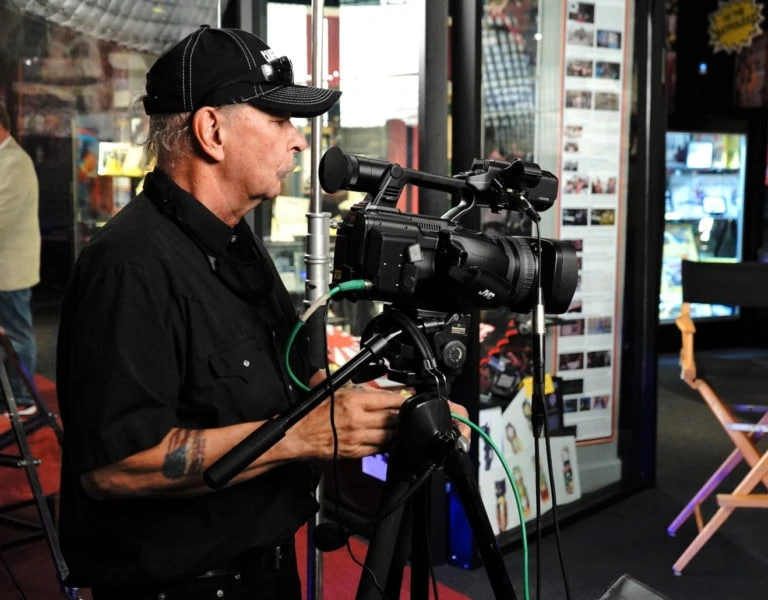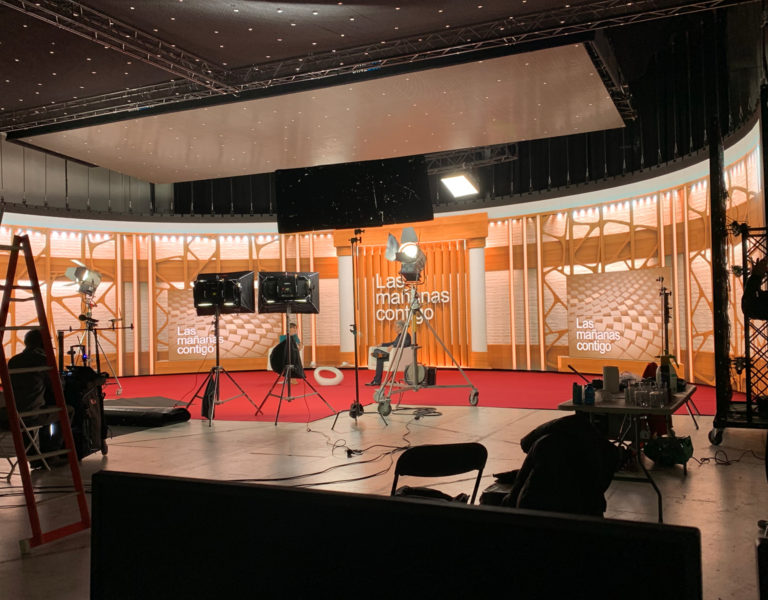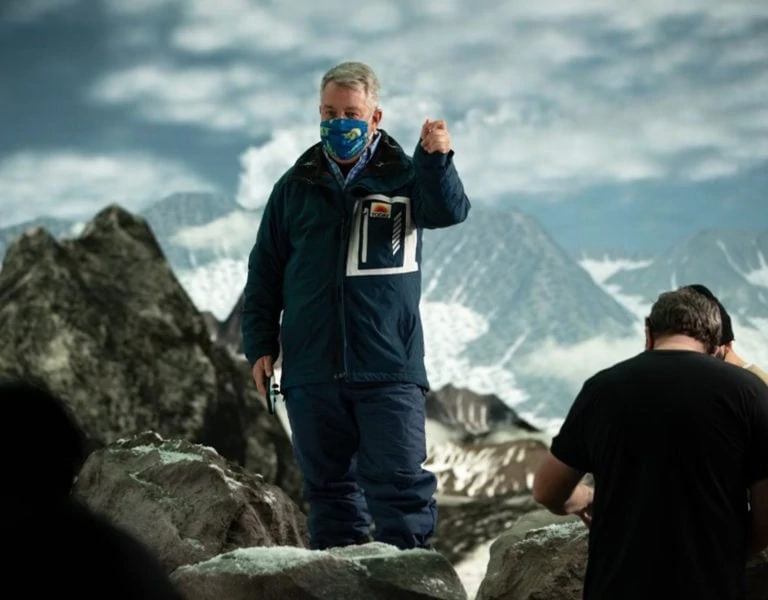Southern comfort
Raine Allen-Miller’s Peckham-accented love story has upended the Curtis monopoly on London romcoms in vivid style. Cinematographer Olan Collardy’s lensing puts the south of the Thames firmly in the spotlight.
There’s a knowing moment in sunny romcom Rye Lane when lovestruck leads Dom and Yas (David Jonsson and Vivian Oparah) stop by a Mexican food stall called Love Guac’tually, where their burritos are whipped up by a certain Colin Firth. While Richard Curtis’ and Raine Allen-Miller’s films may share a genre and a love for London, the latter director’s first feature marks a colourful new direction for meet-cute movies.
Rye Lane is not only Allen-Miller’s long-form debut but that of her cinematographer, Olan Collardy, whom the director entrusted with bringing Tom Melia and Nathan Bryon’s wisecrack-spritzed script to life. Allen-Miller and Collardy first worked together in 2020 on a mobile phone commercial, and six months later the director sent the DP a text that would change the course of his professional career. “She told me she had a feature in the works and wanted me to have a read,” Collardy recounts. “Usually you’ll get an email [about a job] from your agent and this was straight from the director, so in my head I was thinking, ‘This is interesting.’”
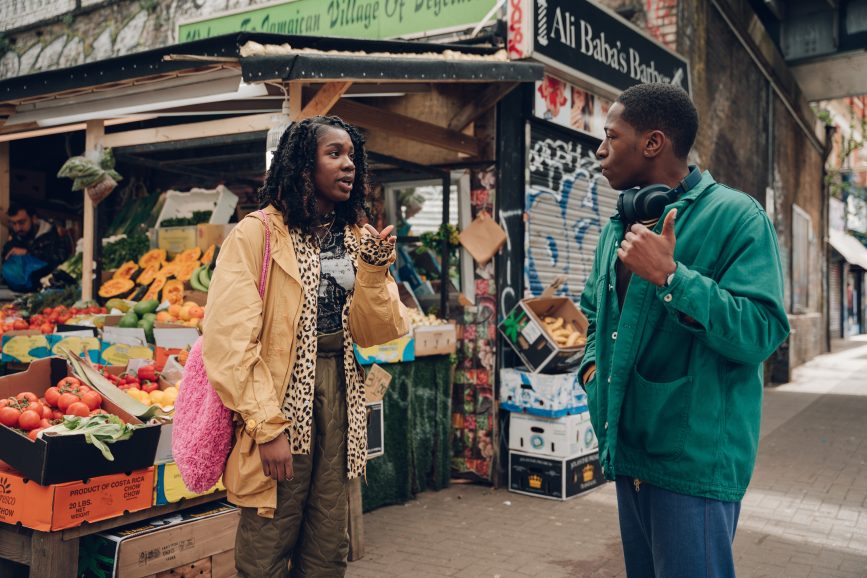
After an interview with Allen-Miller and producer Yvonne Isimeme Ibazebo, the job was Collardy’s. He read the whole script in one sitting – “I couldn’t put it down!” – and admits he’d never have expected a romcom to be his first foray into the long-form narrative world. “For me, what swung the needle was that, one, it was an incredibly good script and, two, Raine is someone who I genuinely believe has an authentically strong voice – a Raine film is a Raine film, and she’s unapologetically herself creatively. I knew she was someone who could take me into a sandbox where I could play and I could leave with something that feels authentic, new, and fresh. It was a no-brainer.”
While Collardy and Allen-Miller shared a unique vision for the film’s visuals, they employed a number of reference points to help them shape their desired look. Surrealist comedy Sorry to Bother You helped the director model the fun vignettes that pepper the narrative, while Peep Show was a touchpoint when it came to (almost, but not quite) breaking the fourth wall. “[The actors’] eyeline is so close to the lens and it feels, as Raine as always says, like you’re in their brain,” adds the DP.
The duo also looked at Spike Lee’s Do the Right Thing to reference how to hero South London in a similar way to the filmmaker’s portrayal of Brooklyn. “It was about how we could flip [Peckham], whereby we give people something that they are familiar with and give it to them in a new presentation – very magical, yet grounded in reality,” Collardy explains. “The performance was heightened, wardrobe was bonkers, the production design was amazingly colourful… [In my lensing] it was about keeping it real and grounded. That’s one thing I, as a filmmaker and an artist, always want to bring to the world and any work I do: how can I make this grounded? How can I make this feel natural, while still having this sense of beauty in it without being in your face?”
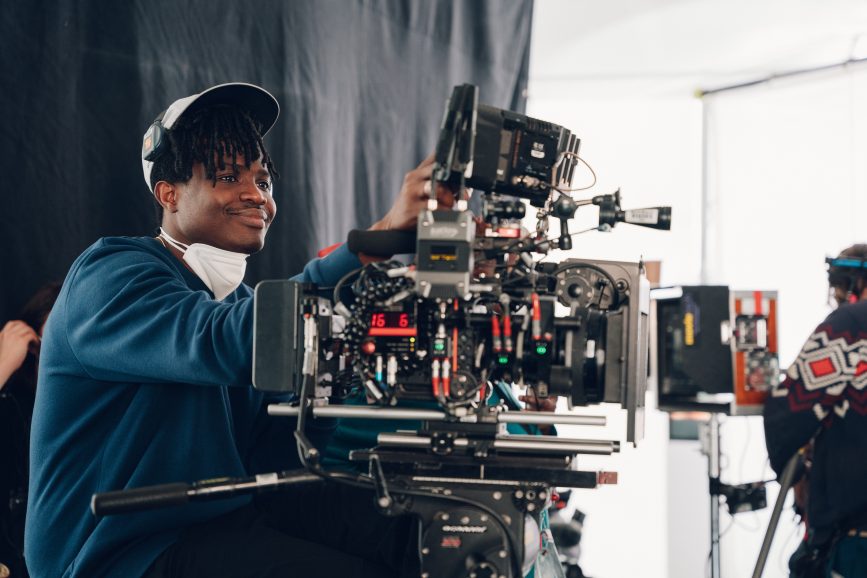
Anamorphic allure
Allen-Miller had long been a fan of anamorphic in her short-form work, so it was almost a given that Collardy would adopt the format for Rye Lane. This plan was initially almost scuppered by the studio’s requirements for 4K acquisition, meaning they would have to shoot on the ARRI Alexa LF and forgo the director’s beloved glass due to lack of large-format anamorphic availability. Fortunately, they managed to make the Alexa Mini work for the job, complemented by JDC Xtal Xpress High-Speed Anamorphics. “I think it would have been a shame [to shoot with spherical lenses] because you wouldn’t get that bokeh, that stretch, that painterly feeling that you get with anamorphic lenses, and it would have taken away for the magical realism we were hoping for visually for the film,” the cinematographer muses.
The lenses were a serendipitous discovery by Collardy. The film was shot in 2021, during the post-COVID production boom, and he was struggling to find any suitable anamorphic glass available at Panavision. A week after his visit, the rental house let him know they’d found some Cooke Xtal Xpresses at the bottom of a wardrobe, but after testing he decided they weren’t quite the right fit for Rye Lane. He landed the JDC set through MovieTech, and after testing a variety of focal lengths, from 24mm to 75mm, he showed the results to Allen-Miller. “I remember she looked at the 24mm and said, ‘That’s the lens,’” he smiles.
Around three-quarters of Rye Lane is shot on the 24mm glass, with its distinctive distortions and aberrations adding to the film’s character. Using it allowed the filmmakers to show familiar South London locations in a different light and craft the film’s visual grammar. Collardy expands: “It was able to give this comical edge to the image. If you put the camera in the right place with that crazy distortion going on, it already felt funny. I’m a big fan of these lenses and I feel they were right for Rye Lane, but they’re not right for everything.”
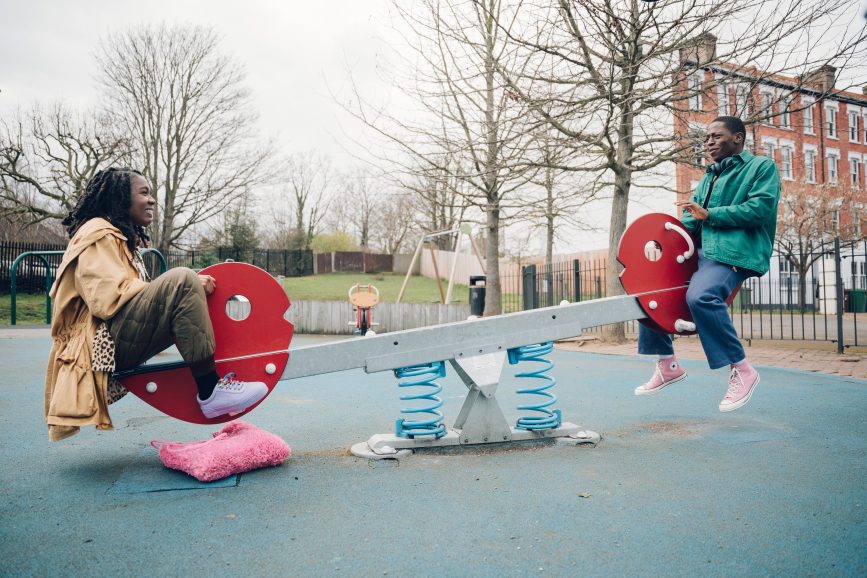
The lenses were paired with the cinematographer’s filter of choice for the shoot: the Bronze Glimmerglass. “Shooting with darker skin tones, I feel the warmth you have with the bronze helps blend the highlights, especially when shooting with daylight. It helps massage those white highlights into the warm tones,” he says.
Principal photography took place over 25 days in spring 2021. Shooting with such wide lenses was both a blessing and a curse when it came to capturing the busy South London streetscapes that give the film its heart. The production could only lock the roads for a couple of minutes at a time, so the pressure was on the camera department to get the required shot in a short timeframe and control the framing.
The filmmakers favoured an objective approach to camera movement to aid the storytelling in Rye Lane. “Through longer shots, we let the frame develop over time, highlighting the characters and the world they inhabit,” says Collardy. “We used top [bird’s eye view] shots to give the audience a sense of observing the events unfold, and split diopter shots to connect the foreground and background in a single shot, creating a powerful storytelling device. Through this approach, we were able to maintain tension in scenes and guide the audience’s attention to what was important, while preserving our creative vision in the editing process.”

Movie magic
The magical realism element that Collardy referenced in his camerawork is also reflected in his approach to lighting. He takes his inspiration for lighting spaces and faces from Dutch Masters such as Vermeer and Rembrandt: “They were brilliant painters who knew how to use light and shadows to create strong storytelling through imagery. I’ve adapted their techniques to my lighting approach, which involves using soft light that feels natural and unobtrusive.”
Working closely with gaffer Bill Rae-Smith, Collardy sought to bring some fun to the film, especially to the colourful vignettes. They wanted to give them a “colourful, otherworldly look, without losing sight of the film’s grounded aesthetic. We wanted to create a subtle but powerful balance between the real and surreal.”
The film largely takes place in day exteriors (indeed, the narrative spans a single day in Dom and Yas’ life), and Collardy and Rae-Smith used natural light to their advantage. The DP explains: “My philosophy was to not fight and impose a look outside of what was naturally there. The approach was to shape the light where possible; with diffusion textiles and negative fill, then through camera, deciding what you are exposing for in the scene and finding the balance between skin tones, the background and the sky.
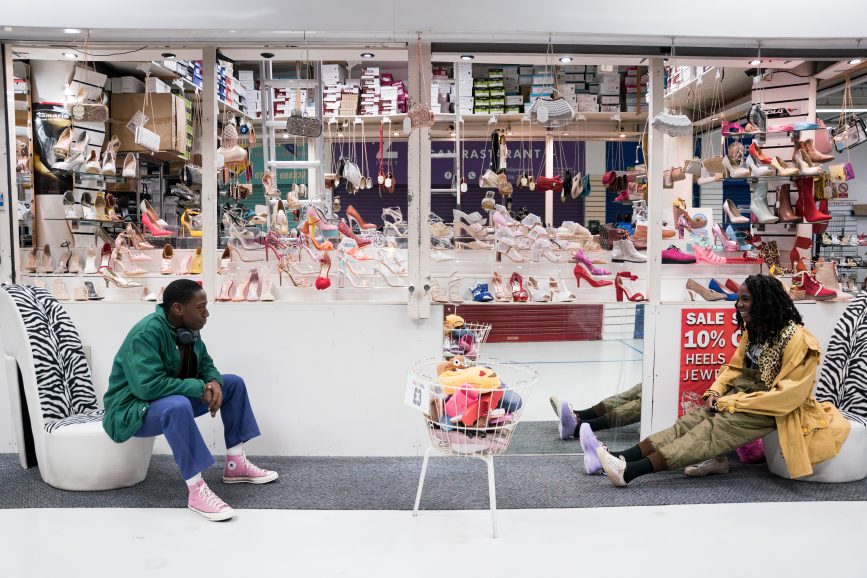
“The only day exterior scene that was artificially lit was the barbecue party scene where I had two Dinos in the neighbouring gardening to create a directional warm light to simulate a setting sun look and feel, since it was a long scene which was being shot over two days and I needed some visual consistency.”
Interiors, meanwhile, were lit with HMIs (mainly M90s and M40s), lighting from outside “to give actors room to move around and a roaming floor lamp (usually an LED Kino Celeb or LiteMat) to wrap the light and key the talent. Given the reflective nature of darker skintones, I use lots of diffusion when it comes to medium/medium close ups/close ups shots as close to the actors to reduce specular highlights on faces.”
Glorious pops of colour are a key part of Rye Lane’s eye-catching visuals, and this was further highlighted in the grade with CHEAT’s Jack McGinity, a long-time collaborator of Allen-Miller. “One thing we worked on was ensuring the skin tones had this filmic softness to them, and just making sure the film was never neutral,” remembers Collardy. “It’s a film that’s alive with colour – we’d say, let’s shift the colours around, give it a green hue, just something that doesn’t feel too real and neutral.”

The long and short of it
Rye Lane marks a confident leap to long-form narrative for Collardy, but he’s keen to acknowledge the part that shooting short-form has played in his growth as a cinematographer. “Narrative films have always been a big passion of mine, and it’s where I want to be,” he says, “but short form allows me to experiment and to bring those tools into changing the landscape of long-form storytelling, as we were able to do on Rye Lane – creating something that’s new and fresh.”
It may be a proudly Peckham production, but Rye Lane managed to get the world talking after its Sundance premiere. “I’m proud that I’ve been part of something special – something that resonates and something that is seen,” its cinematographer says. “My childhood friends have seen it, my mum has seen it, my sister has seen it – everyone has seen it, and that’s why I want to make films. I want to make films that create dialogue and shift the needle of culture, and the only way you can do that is if people see it. My thing is making films for an audience that effect change and create dialogue, and I feel Rye Lane has been able to do that.”

